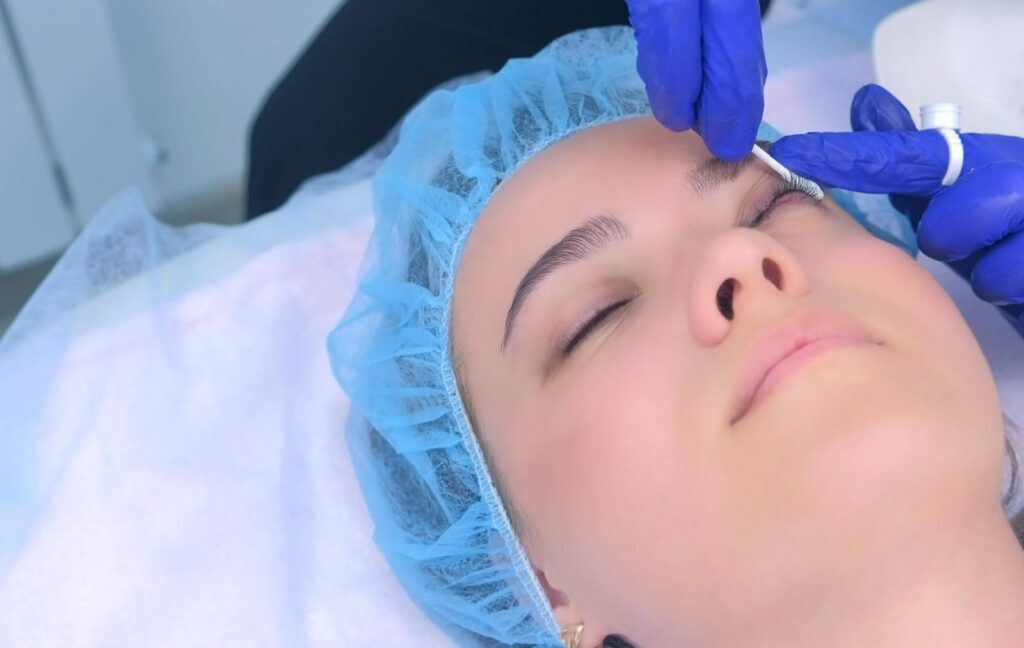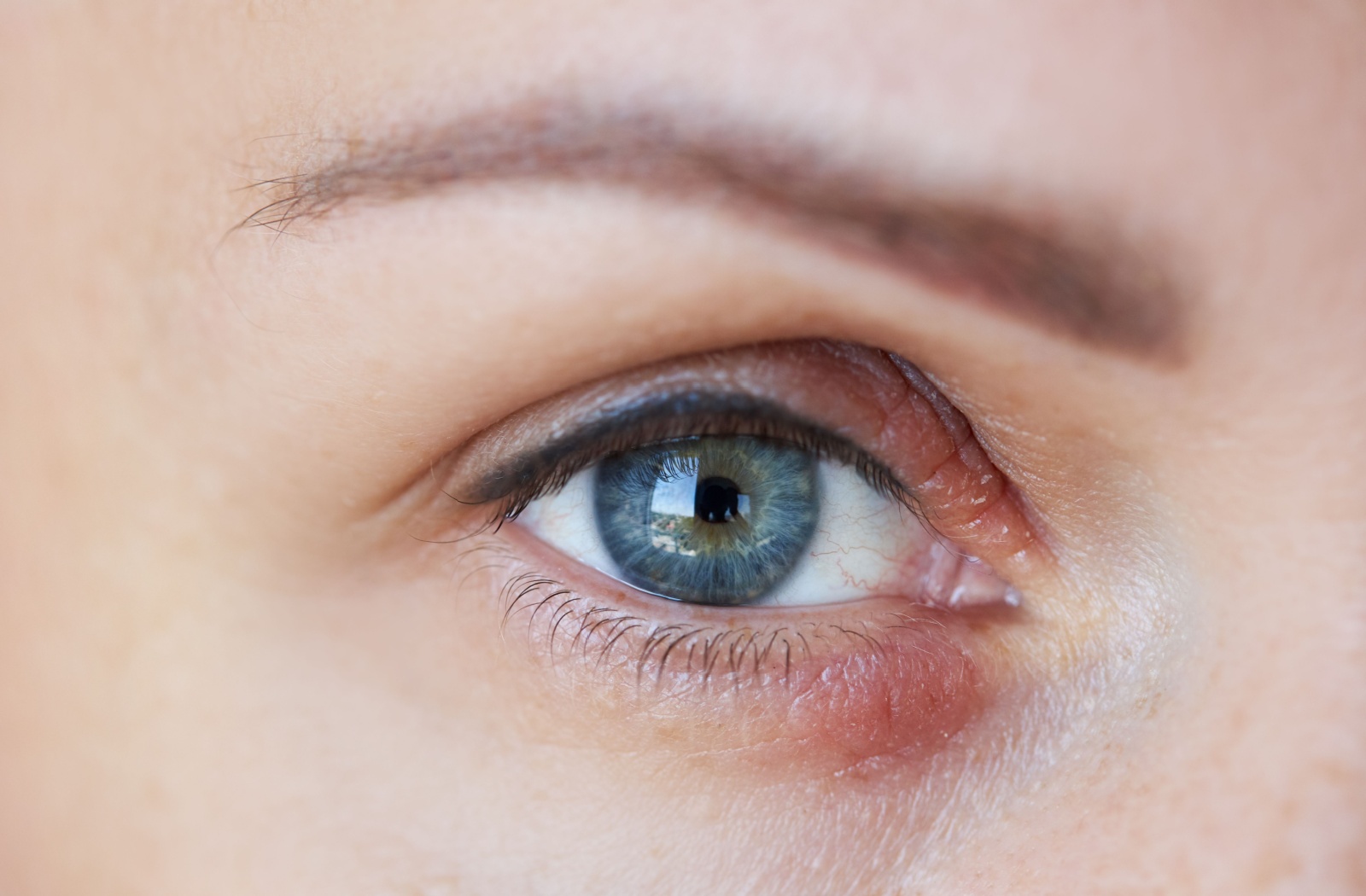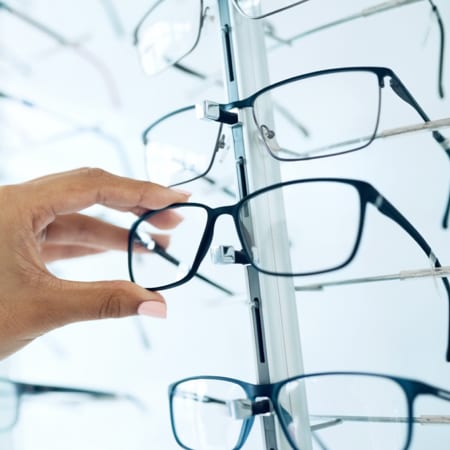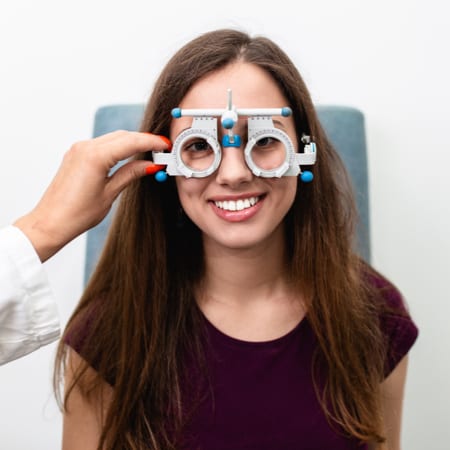Blepharitis is an eye condition that causes inflammation of the eyelids. It’s a surprisingly common yet often misunderstood condition.
Symptoms such as redness, swelling, or flaky skin on your eyelids can be frustrating, and it’s natural to wonder how this condition develops and whether it could be spread to those around you.
Luckily, blepharitis isn’t contagious. However, the bacteria or mites associated with the condition can potentially transfer through shared items like towels or makeup.
However, only certain factors like hygiene habits, related skin conditions, or overall eye health determine whether someone develops blepharitis. If you develop blepharitis, consult your eye care provider to learn about your treatment options.
What Is Blepharitis?
Blepharitis is a chronic condition involving inflammation of the eyelid margins. It can affect people of all ages and is usually caused by an overgrowth of bacteria, blocked oil glands, or underlying skin conditions like dandruff or rosacea.
If you have blepharitis, you’re not alone. Studies show that as many as 47% of patients who seek eye care have blepharitis. Although blepharitis can be uncomfortable, it’s manageable with proper care and attention to regular eyelid hygiene.
There are 2 main types of blepharitis, and recognizing which type you have is essential to effective treatment.
Anterior Blepharitis
Anterior blepharitis affects the outer edge of the eyelid, where the eyelashes are attached. The most common cause of its development is bacteria on your skin or dandruff from your scalp or eyebrows.
In rare cases, allergies or mites can also aggravate anterior blepharitis.
Posterior Blepharitis
Posterior blepharitis affects the inner edge of the eyelid, where it makes direct contact with the eye.
It’s usually caused by meibomian gland dysfunction (MGD), the oil-producing glands within the eyelids that help keep your eyes lubricated. Skin conditions like rosacea or scalp dandruff often contribute to posterior blepharitis.
How Does Blepharitis Spread?
While blepharitis is not contagious, some contributing factors can spread through shared personal items. Sharing makeup, towels, pillowcases, or facecloths increases the risk of transferring bacteria or mites to the delicate eye area.
Simply coming into contact with these bacteria or mites won’t automatically lead to blepharitis. Factors including your body’s immune response, hygiene practices, and pre-existing skin or eye conditions determine whether symptoms develop.
You can help minimize your risk by avoiding sharing personal items and maintaining good hygiene habits, such as washing your hands before touching your face or eyes.
Symptoms of Blepharitis
Blepharitis can come with a range of symptoms that vary in severity. Common signs include:
- Eyelid redness, inflammation, & swelling
- Irritated or dry eyes
- A burning or stinging sensation in the eyes
- Crusting or flakes at the base of the eyelashes
- Loss of eyelashes
- Watery eyes
- Light sensitivity
Symptoms tend to worsen in the morning, as crusting can accumulate overnight, leading to scratchy, dry eyes when you wake up. If left untreated, blepharitis can lead to complications such as dry eye, recurring styes (hordeolum), or, in severe cases, corneal damage.
Managing Blepharitis

Managing blepharitis is about consistency. Establishing a daily eyelid hygiene routine can significantly reduce bacteria, unclog oil glands, and alleviate inflammation.
Healthy Habits to Help Manage Symptoms at Home
Here are a few ways you can start managing your symptoms effectively at home:
- Apply warm compresses by placing a warm, damp cloth over your closed eyelids for 5–10 minutes to loosen crusts & soften blockages in your oil glands
- Gently clean your eyelids after the compress using diluted baby shampoo, a specially formulated eyelid cleanser, or as recommended by your eye doctor
- Use eye drops, such as over-the-counter artificial tears, to help relieve dryness associated with blepharitis
See an Eye Doctor for Severe Symptoms
Blepharitis is a long-term condition. While there isn’t a permanent cure, your eye doctor is your partner in managing those more intense symptom periods or “flare-ups.”
Your eye care professional can recommend additional treatments such as prescription antibiotics, anti-inflammatory medications, or steroid eye drops for severe symptoms. Addressing underlying conditions like dandruff or rosacea will also help manage symptoms more effectively.
Tips to Help Prevent Blepharitis
Although blepharitis can’t always be avoided, taking preventative steps can reduce the risk of flare-ups and improve overall eye health. Try incorporating these simple habits into your routine:
- Clean your eyelids daily to keep bacteria at bay
- Consult your eye care provider for professional eyelid-cleaning treatments
- Avoid sharing personal items such as makeup, towels, or pillowcases
- Frequently wash linens like pillowcases, towels, & face cloths with hot water
- Practice proper cleaning & storage of your contact lenses to prevent irritation & bacterial buildup
- Regularly replace old & expired makeup to lower the risk of contamination
When in doubt, good hygiene combined with regular visits to an eye care professional can help maintain healthy eyelids and alleviate the uncomfortable symptoms of blepharitis.
Get Started on Restoring Your Eyelid Comfort
At Woodstock Vision Care, we understand how frustrating and uncomfortable blepharitis can be. That’s why our team is dedicated to providing personalized care plans to help you manage and relieve your blepharitis symptoms effectively.
If you’re ready to get help with your blepharitis symptoms, book an appointment today at our clinic and take the first step toward healthier eyes and longer-lasting comfort.
















